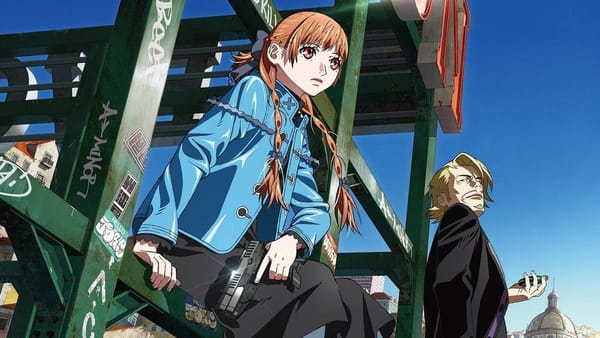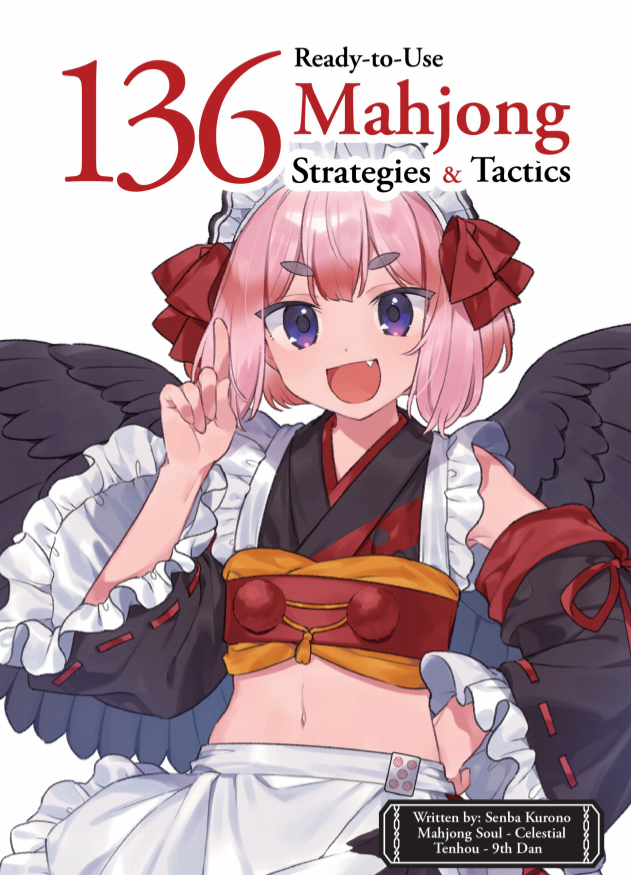Street Fighter 6’s accessibility solution is to be two different video games
World Tour and Fighting Ground offer fundamentally different experiences
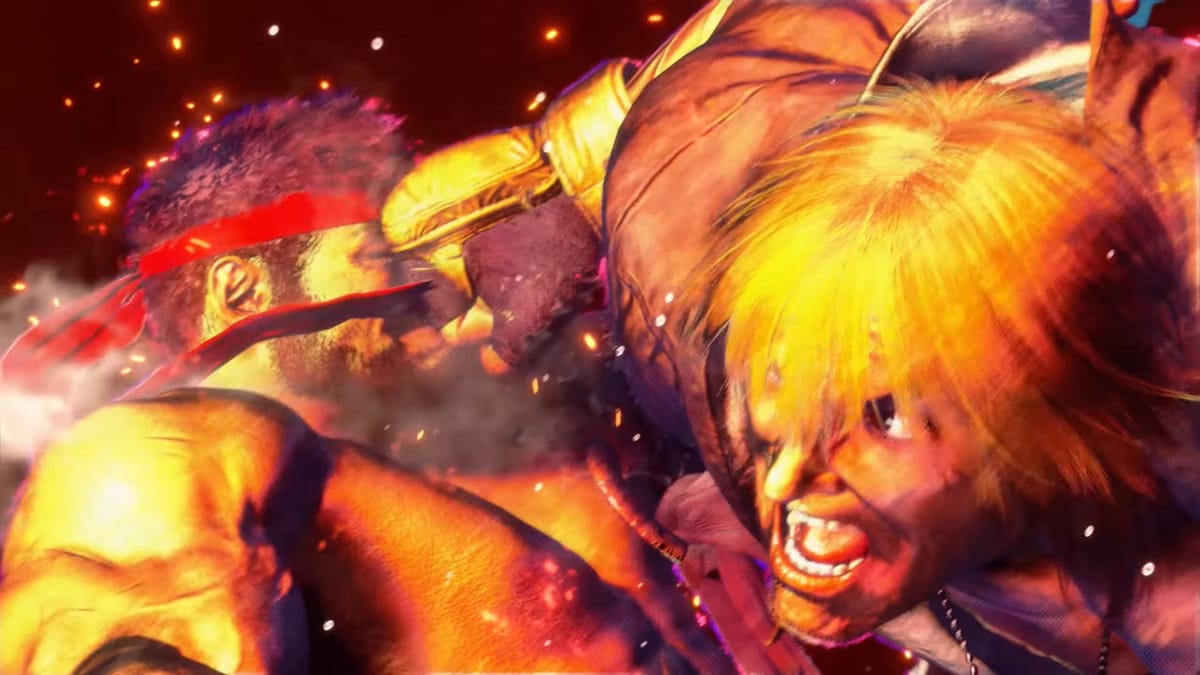
I’ve been talking about accessibility in competitive fighting games for a long time, particularly back when I was on Polygon. Since Street Fighter IV in 2008, there’s been a strong design trend towards simplification in a genre that can easily overwhelm.
How were these games introducing themselves? I talked about tutorials, simpler game designs, easier controls, and even gimmicky mechanics. The future fighting game is coming, I argued, and it’ll probably have one-button special moves.
I was kind of right; Street Fighter 6 does have a control scheme like that. But it isn’t really simplified— in fact it looks more complicated than previous entries. The developers did something else.
Street Fighter 6 is two different video games.
This trailer for the World Tour mode lays it out in seconds. You’re going to a build a character, learn your own fighting style, level up and gear up. World Tour is the fighting RPG that players have been imagining and begging for for years now.1 It’s a lot like every other popular modern video game: a progress quest through an unending stream of rewards.
World Tour is not unprecedented: in fact, it takes its name from a similar, beloved RPG-style skill-building mode in the home versions of Street Fighter Alpha 3.2 Nether Realm’s games (Mortal Kombat, Injustice) have had extensive, grind-heavy one-player modes for years.
But it might be the first time a fighting game developer has gone in so hard on the idea. World Tour is promised not to be some side dish, but a full game experience that will keep single-players busy for a long time without ever fighting against another human being.
Note that “Fighting Ground”, the versus fighting component with pre-set characters like Ryu and Chun-Li and Dhalsim, is a separate game mode, something that takes place outside of World Tour. What we hardcore fighting game types would consider “the entire game” is a fraction of what SF6 intends to offer.
“Fighting Ground” is a fighting game, and “World Tour” is an RPG, and by their nature they do completely different things. Let’s talk about what they each offer players.
World Tour offers progress and gratification
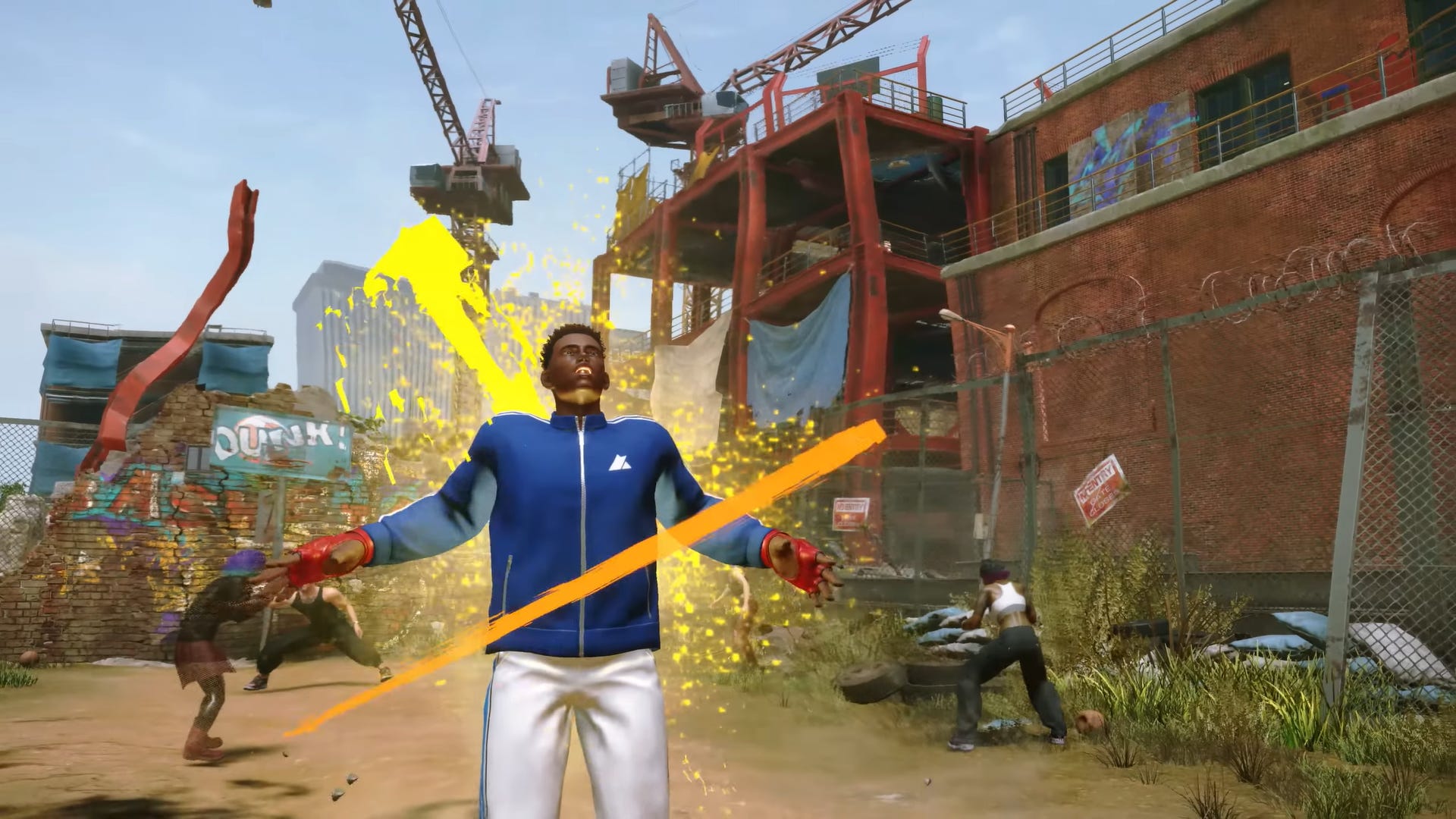
As they’ve tightened their focus to esport competition, the current generation of fighting games have left a lot of single-players— who honest to god only want to beat up the computer over and over again— out in the cold. SFV, which focused almost entirely on online versus play, was particularly guilty of this.
Combat in a good fighting game feels good, for its own sake, and players should be allowed to enjoy it on their own terms without necessarily taking on the stress of human competition. This is entertainment, isn’t it?
We’ve only seen a few minutes of footage of World Tour mode, but it makes clear that it’s giving single-players what they want and much more. Want to crush a bunch of training dummies and level up? Here’s a whole game world in which to run around doing that. Here’s a character who looks like you who you’re going to be able to equip with all your favorite moves and raise into a god.
I would imagine World Tour won’t offer much of a challenge, because that’s very much not the point.
The point of World Tour, and forgive me for sounding cynical, is to chop out the realities and difficulties of real-world competition and give casual players a world where they are always winning and always being rewarded, always getting stronger. They will never run out of things to do. Just like normal video games.
I don’t think that’s a bad thing to offer. Again, this is entertainment.
Fighting Ground offers competition and self-improvement
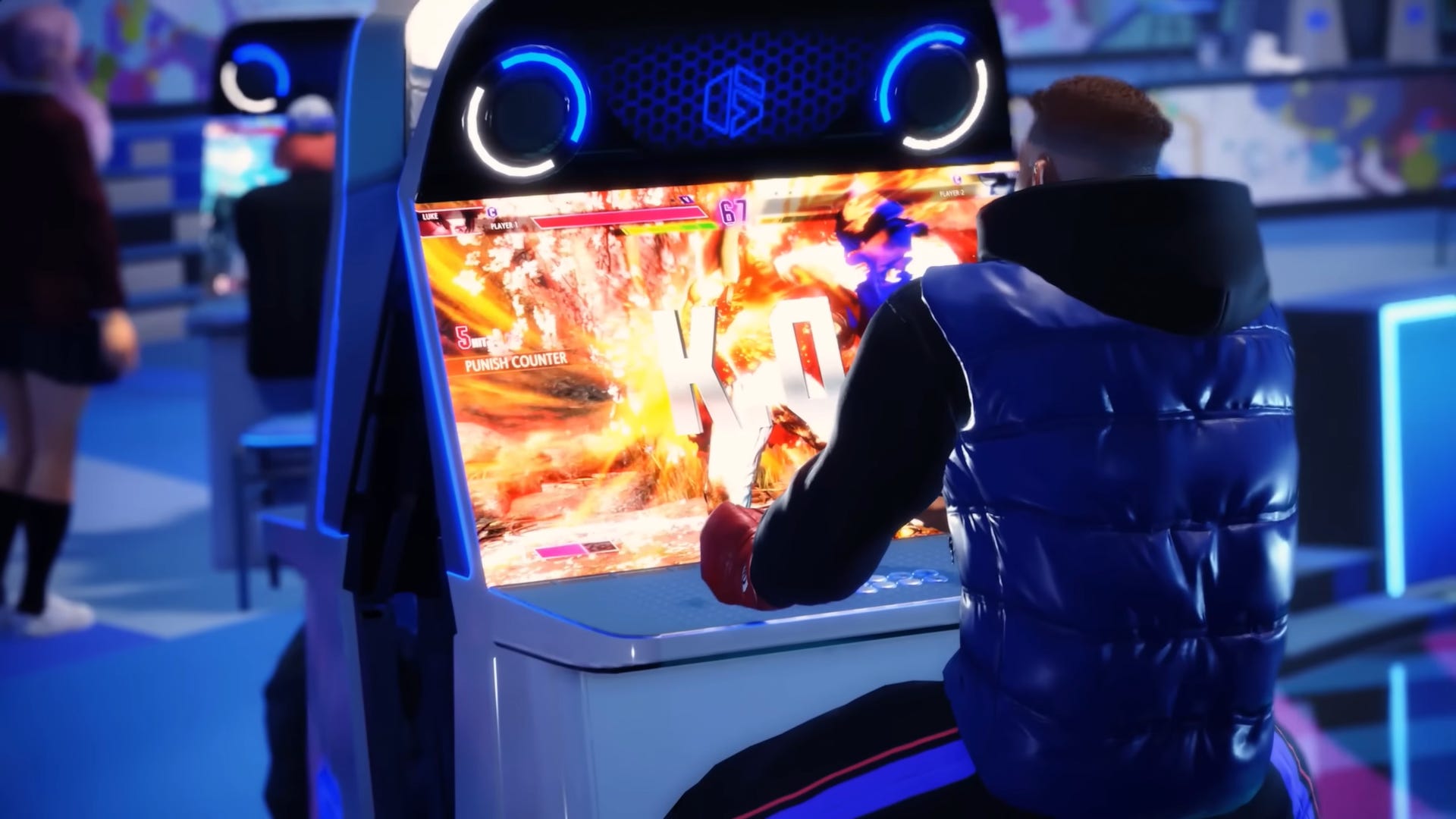
Meanwhile, Fighting Ground is the fighting game. Hardcore players can rest assured that their holy ground is not besmirched. Capcom tried besmirching it back in Street Fighter X Tekken, if you recall, and it didn’t go over well. If anything, SF6 looks significantly more complex than SFV, a game that trimmed Street Fighter down to absolute essentials.
Overpowered single-player characters of the type you’ll build in World Tour turn out to be quite boring when turned against each other in competitive play. More than that, a character who’s strong because the player spent hours collecting experience points defeats the purpose of a fair competition.3
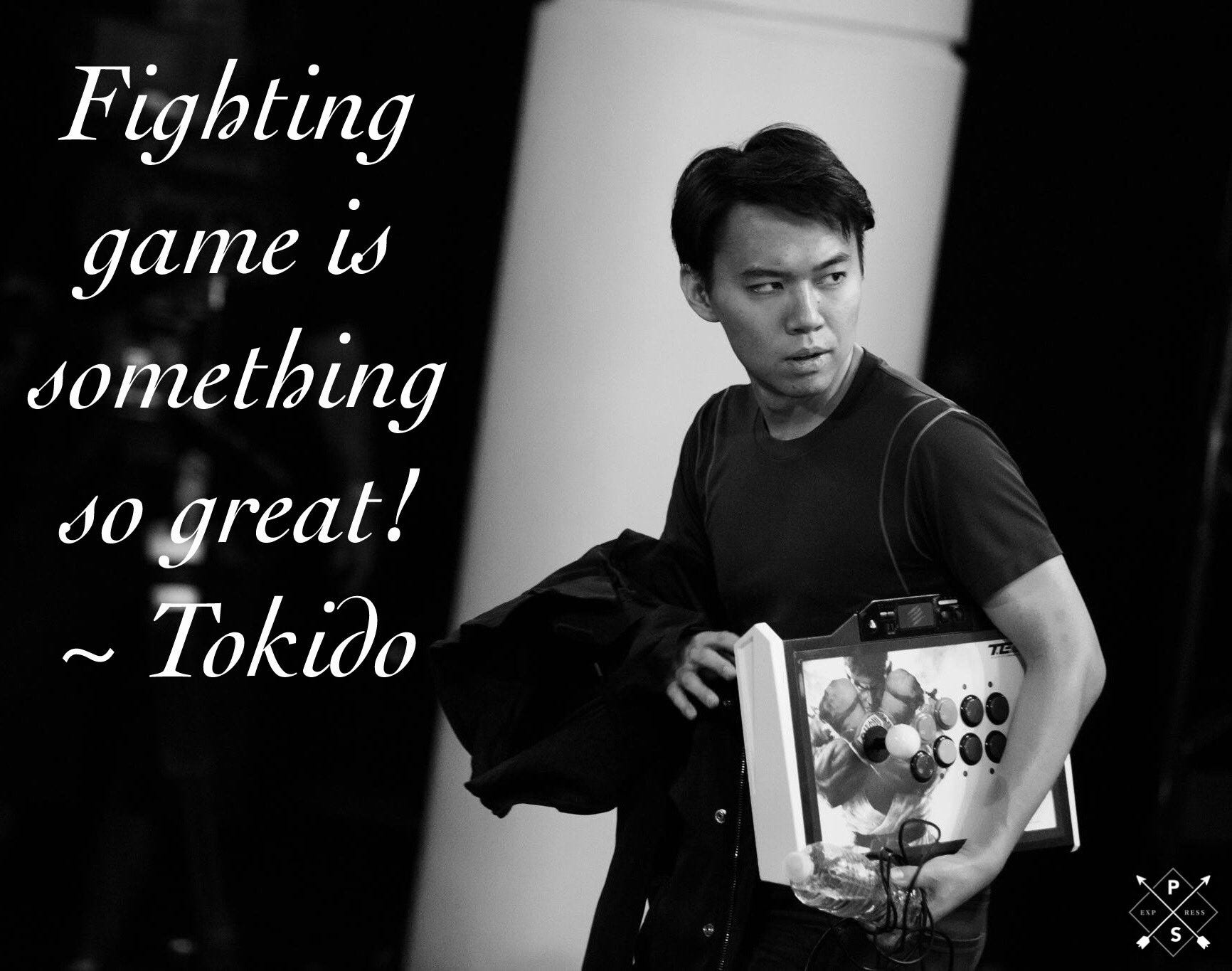
Fighting games are about something different from most mainstream video games, which is why— beyond Street Fighter II— they’ve always been a niche genre.
In an RPG you level a character’s stats. In a fighting game the character is always the same: instead, you level yourself. You learn, you practice, you pick up tricks from other players, you study, and steadily, you improve proportionate to your effort.
And what do we improve at? Why, making life difficult for the other player, of course! Seasoned players learn to maximize the damage of every hit, push their offense and reduce the opponent’s options, and analyze their opponent’s habits to crush their defense.
We fighting game players get stronger by making the experience more and more difficult for each other. The strong learn, adapt and overcome; the process never stops. If you can’t or don’t want to do it, you lose.
So you inherently have to accept, contrary to the myth-making, chosen-one suck-uppery of most video games, that you’re not the greatest to have ever done it. There are many players who are far beyond you, and there are many players who are far below you as well.4
Irrational, defensive, self-centered responses to the difficulty of this genre— but, but I AM the best, the problem is YOU— are so common that other players pass them around for laughs: see accounts like scrubquotesx on Twitter.
So we’re talking about a high effort game genre that calls for self-directed passion, a strong work ethic, and a high tolerance for failure. That’s not everybody’s idea of a fun time.
For those of us who love them, competitive fighting games are the greatest. But not everybody needs the competition part. Again, this is entertainment!
You probably figured out that I’m a lot more on the “Fighting Ground” side than I am the “World Tour” side here, and I do imagine some drawbacks to this approach.
Only a massive AAA dev can pull this off
I want to immediately point out that only a developer on the scale of a Capcom or Bandai/Namco or Ubisoft can even attempt something on the scale of World Tour.
It is an easy solution to suggest as an observer: “just make another, completely different and more commercially appealing video game”. Oh, okay, says the five-person indie crew, let’s all attach a forty-hour RPG to this game.
Fighting games have a pretty tight scope— that’s one of the things that makes them good!— and it’s going to be pretty unfortunate in a couple years when nobody wants to buy a fighting game that doesn’t come with an RPG. There are already people saying SF6’s 18 character lineup is somehow lazy: gamers’ desire is known to be infinite. Just look at Smash Brothers.
World Tour players won’t necessarily want to join the competitive FGC
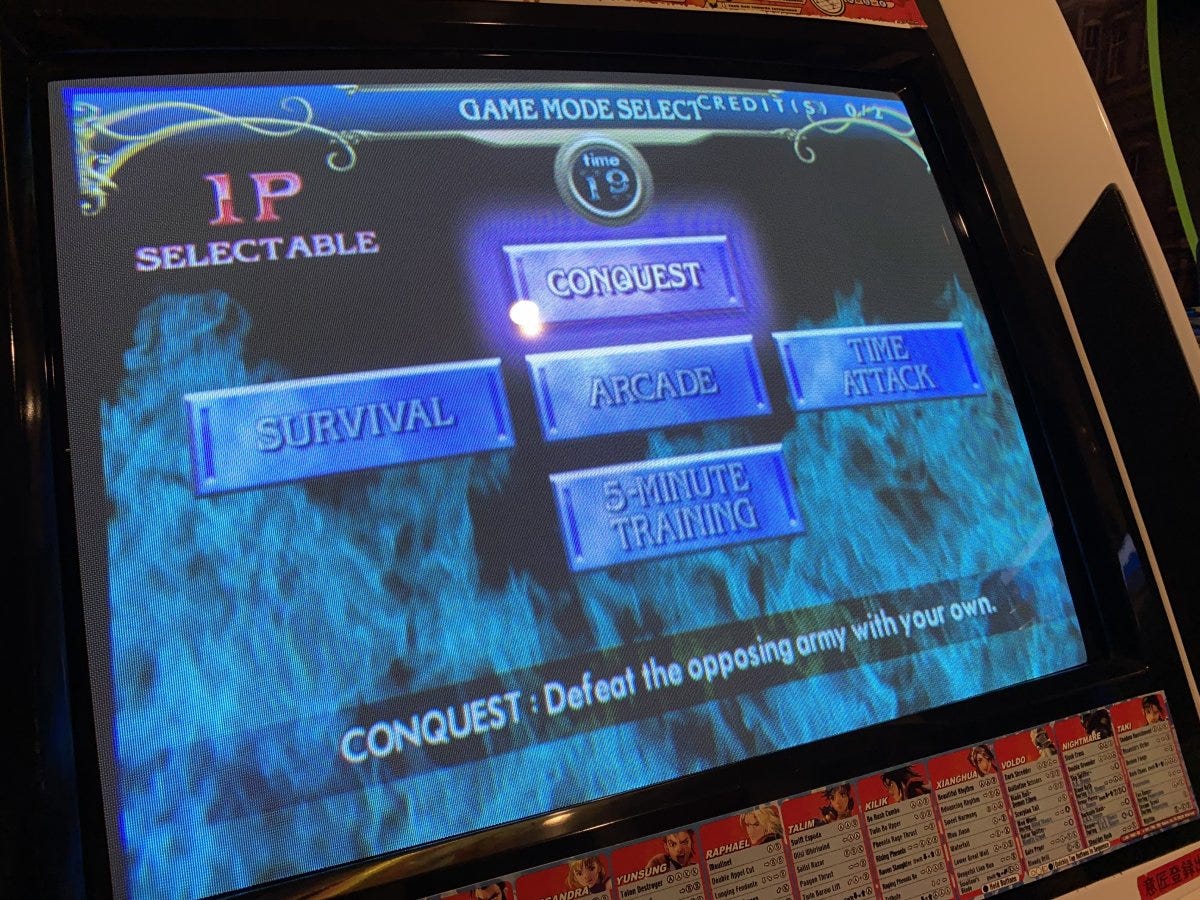
Fighting game players always get excited at anything that can bring more players into the competitive community. New games always bring new players, and every so often a popular title like Street Fighter V or Guilty Gear Strive will induce major growth in the competitive community.
It seems to me like World Tour and Fighting Ground will be attached, yet isolated. If you like World Tour, you might be inspired to walk your avatar into the arcade and check out Fighting Ground.
But I suspect it’s more likely that most Street Fighter 6 players will simply stay in World Tour forever. After all, if Monster Hunter is any indication, you’re never going to run out of things to do, even if you play for hundreds of hours.
FGC competitors might have to get used to the idea that a lot of new Street Fighter 6 players will be exclusively interested in grinding out gear for their single-player character, or sadder still, might have no interest at all in a pick-up game. That’s why World Tour exists, after all: to grab those people who’d never play a head-to-head fighting game in the first place.
We have always had these games to ourselves, but soon the Street Fighter competitive FGC will join the “for Honor” Smash Brothers guys in having to share.5
It’s going to be a huge hit, though
Putting misgivings aside and barring a launch disaster on the scale of Street Fighter V, I think SF6 is an inevitable, no-brainer massive hit.6 Millions of copies, massive influx of new players, Evo explodes. Even speaking as a Guilty Gear man, I’ll be happy to see it.
And it’s all going to be on the back of World Tour.
Even I’ve had thoughts of this concept; a mode where a player trains in a dojo, travels around town, and learns the game slowly through lessons disguised as easy fights. I think many players have! ↩
Long-time fans clamored for the return of World Tour for decades; indeed every time a fighting game has a large scale CPU-grind mode from Virtua Fighter 4 Evolution to Soul Calibur, it’s remembered as an exceptional classic ↩
Back in the day people used to play their maxed Dragon Ball Z Budokai guys against each other, and there wasn’t much game left at that point, if I recall ↩
SFV helpfully showed players their *exact location* on the ranked ladder. I peaked around the top 8,000. ↩
Prediction: a popular movement forms to allow the overpowered single-player characters into ranked online play ↩
My bill for predicting the obvious is in the mail ↩

